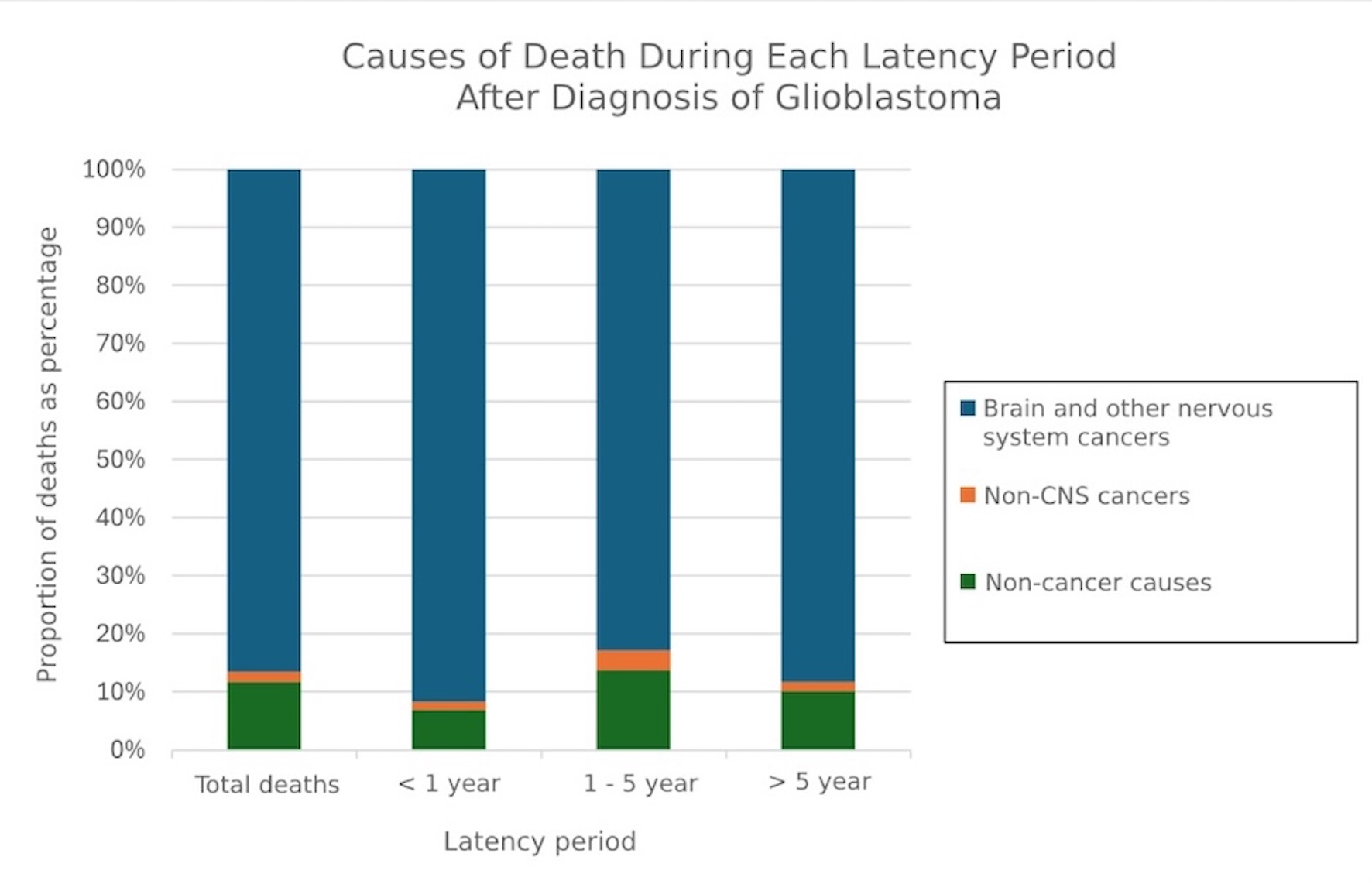Relative, Conditional, and Overall Survival and Causes of Death in Patients With Glioblastoma: A Retrospective Longitudinal Cohort Study
DOI:
https://doi.org/10.14740/jocmr6192Keywords:
Glioblastoma, Survival rate, Cause of death, SEER program, Non-cancer mortalityAbstract
Background: Our goal in this manuscript was to perform a survival analysis and understand the causes of death (CODs) in patients with glioblastoma using the Surveillance, Epidemiology, and End Results (SEER) database.
Methods: A retrospective cohort study was conducted using version 8.3.9.2 of SEER*Stat software to extract data from the SEER 17 Plus database. Patients with World Health Organization (WHO) grade IV glioblastoma diagnosed between 2000 and 2019 were included to calculate overall survival (OS), relative survival (RS), and conditional survival. R software was used to calculate univariate and multivariate Cox regression models for age, sex, and race to identify their effect on survival.
Results: We included 45,071 patients with grade IV glioblastoma according to WHO 2016 classification. The observed 1-year, 3-year, and 5-year survival rates showed a decline to 40.1%, 9.8%, and 5.2%, respectively. Similarly, the relative 1-year, 3-year, and 5-year survival rates were 40.7%, 10.2%, and 5.4%, respectively. The conditional 3-year survival rates improved up to 16.9%, 42.9%, and 60.2% after 1, 3, and 5 years of survival, correspondingly, with females showing better estimates. The most common cancer CODs were the brain and other central nervous system (CNS) cancers. Among non-glioblastoma cancer CODs, breast cancer was the most common cause. Additionally, cardiovascular diseases, cerebrovascular diseases, and septicemia were the most common non-cancer CODs.
Conclusion: In this study, patients with glioblastoma showed a sharp decline in OS and RS over time after diagnosis. However, there was a notable improvement in conditional 3-year survival over time. Cardiovascular diseases emerged as the most common non-cancer COD, with lower survival rates in males and advanced age.

Published
Issue
Section
License
Copyright (c) 2025 The authors

This work is licensed under a Creative Commons Attribution-NonCommercial 4.0 International License.









